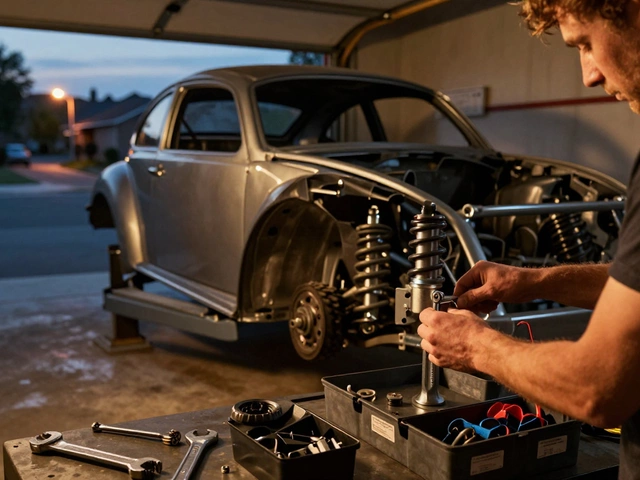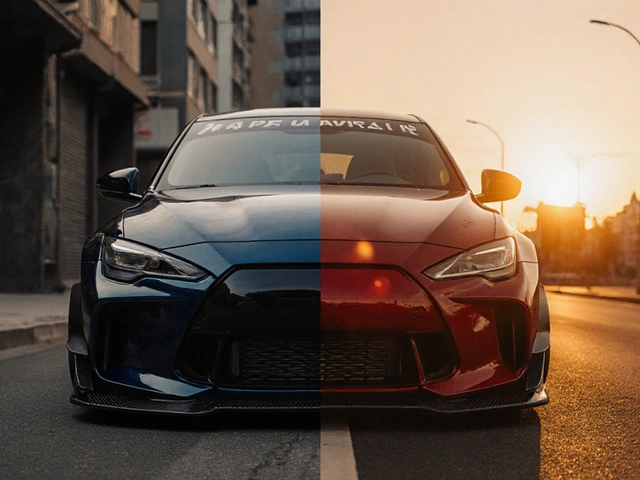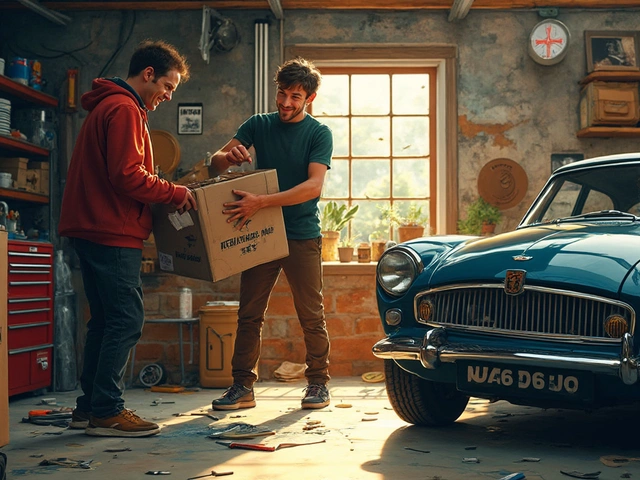Body Kit Compliance Checker
Vehicle Compliance Calculator
Enter your car's original dimensions and proposed body kit extensions to check if modifications comply with Australian standards (VSB 14).
Want to change the look of your car with a bold front lip, wide fenders, or a rear spoiler? You’re not alone. Every weekend in Melbourne, you’ll see cars on the street with aggressive body kits that turn heads. But before you spend thousands on a kit, you need to know: can you legally modify your car body - and what actually happens when you do?
Yes, you can modify your car body. But it’s not as simple as buying a kit off eBay and bolting it on. There are rules. There are risks. And if you skip the steps, you could end up with a car that fails inspection, gets fined, or worse - becomes unsellable.
What Exactly Is a Body Kit?
A body kit is a set of aftermarket parts designed to replace or add to your car’s original body panels. Common pieces include:
- Front bumper (often with a lip or splitter)
- Rear bumper (sometimes with diffuser)
- Side skirts (running along the lower doors)
- Rear spoilers or wing
- Fender flares (for wider tires)
These aren’t just cosmetic. Some kits improve airflow, reduce lift, or add downforce - especially on performance cars. But most people buy them because they want their car to look like it belongs on a racetrack, not a suburban street.
Body kits come in three main materials:
- FRP (Fiberglass Reinforced Plastic) - cheap, easy to paint, but brittle. Cracks if you hit a curb.
- PU (Polyurethane) - flexible, impact-resistant, better for daily drivers. More expensive.
- Carbon Fiber - lightweight, premium look, but costs 3-5x more. Often just a trim piece, not a full kit.
Most kits sold in Australia are FRP. They’re affordable, but they require serious prep work. If you’re not experienced with bodywork, you’ll regret skipping the sanding, priming, and fitting.
Is It Legal to Modify Your Car Body in Australia?
Yes - but with strict conditions. The rules vary slightly by state, but the core principles are the same across Australia.
The key document is the Vehicle Standards Bulletin 14 (VSB 14), published by the Department of Infrastructure. It says:
- Body modifications must not reduce the vehicle’s structural integrity.
- Any added part must not obstruct the driver’s view.
- Protrusions (like wide spoilers or lips) must not extend beyond the vehicle’s original width by more than 50mm on each side.
- Ground clearance must remain above 100mm at all points under normal load.
- Parts must be securely attached - no wobbling, no loose bolts.
That 50mm rule is critical. If your side skirts or fender flares push your car’s total width past the original by more than 100mm (50mm per side), you’ll fail inspection. Many imported JDM kits are too wide. You’ll need to trim them - or buy a kit designed for Australian standards.
Also, no part can create a sharp edge or protrude in a way that’s dangerous to pedestrians. That means no jagged carbon fiber lips or exposed bolts on the front bumper. If it looks like a weapon, it won’t pass.
What Happens During a Vehicle Inspection?
After installing a body kit, you must get your car inspected by an approved vehicle inspector - not just any mechanic. In Victoria, this is called a Modified Vehicle Inspection.
The inspector checks:
- Does the kit match the manufacturer’s design specs?
- Are all parts bolted or bonded properly? No duct tape.
- Do lights, sensors, or cameras still work? (Many kits block parking sensors.)
- Is the car’s original VIN plate still visible and unobstructed?
- Are tires still within the wheel arches? No tire rub.
If your kit fails, you’ll get a defect notice. You have 21 days to fix it. If you don’t, your registration can be suspended. That’s not a warning - it’s a real risk. One guy in Dandenong lost his registration for six months because his rear spoiler was 80mm too wide.
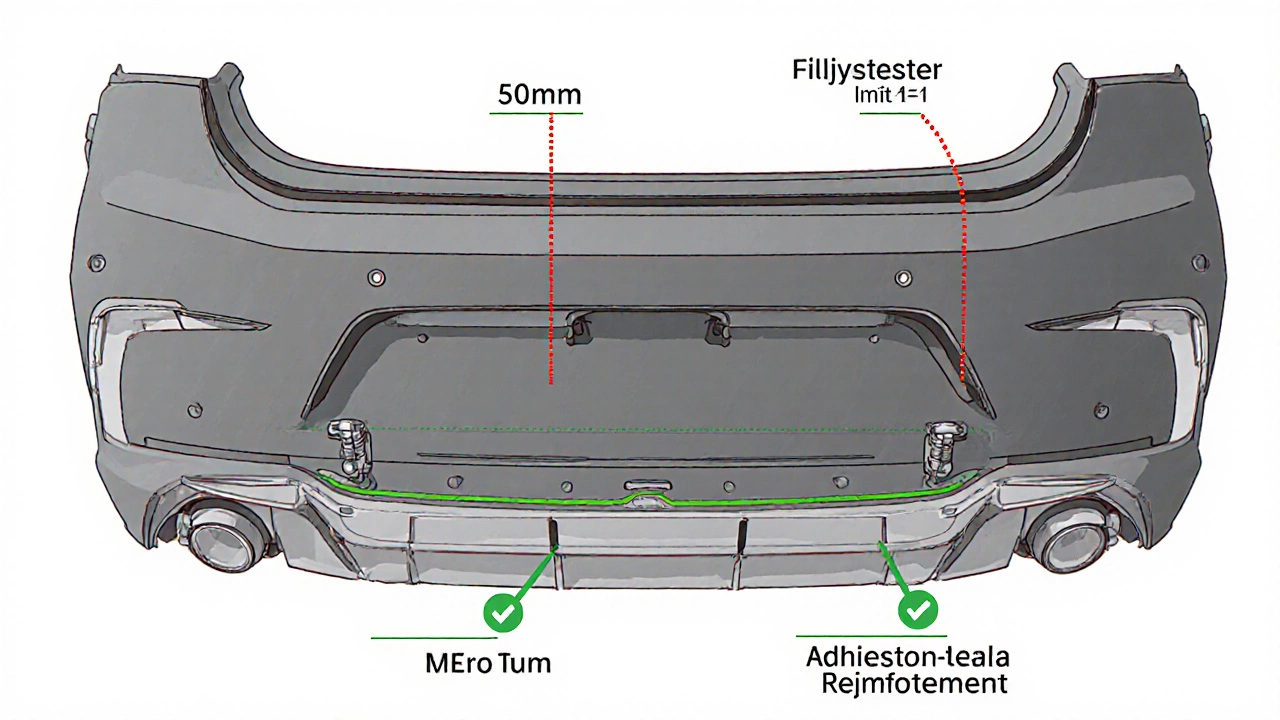
How Much Does It Cost to Install a Body Kit?
Prices vary wildly depending on the car, the kit, and whether you do it yourself.
Here’s a realistic breakdown for a mid-range sedan like a Toyota Camry or Honda Accord:
| Item | Cost Range |
|---|---|
| Basic FRP Body Kit (full set) | $800 - $1,800 |
| Premium PU Body Kit | $1,500 - $3,500 |
| Professional Installation (labor) | $1,200 - $2,500 |
| Painting and color matching | $1,000 - $2,200 |
| Modified Vehicle Inspection fee | $150 - $250 |
| Total (DIY kit + professional install) | $4,000 - $8,000 |
DIY is possible - but only if you’ve done bodywork before. One guy in Geelong tried to install a kit himself on his Subaru WRX. He didn’t align the bumper right. It warped in the sun. He spent another $1,400 fixing it. Save yourself the stress. Hire a specialist.
What You Should Avoid
There are a few traps most first-timers fall into:
- Buying cheap kits from overseas sellers - especially from China. Many are mislabeled. A kit advertised as “for a 2020 Civic” might be designed for a 2015 model. The holes won’t line up.
- Ignoring paint prep - fiberglass doesn’t bond well with primer if it’s not sanded and cleaned properly. Paint peels after 6 months.
- Adding lights to body parts - extra LEDs on bumpers or skirts are illegal unless they’re factory-approved. Red or blue lights? You’ll get pulled over.
- Modifying the roof or hood - unless it’s a factory option, any change to the roofline or hood vents requires engineering certification. Most shops won’t touch it.
Also, don’t assume your insurance will cover a modified car. Most policies require you to declare modifications. If you don’t, and you crash, your claim could be denied. One driver in Ballarat lost $18,000 in repairs because he didn’t tell his insurer about his body kit.
What’s the Best Approach?
Here’s the smart way to do it:
- Choose a kit designed for your exact make, model, and year. Check reviews from Australian owners.
- Buy from a local supplier - they know Australian laws and can advise on fitment.
- Get it installed by a shop that does modified vehicle inspections. Ask if they’ve done VSB 14 jobs before.
- Get the inspection done before you register or drive it on public roads.
- Keep all receipts and inspection paperwork. You’ll need it if you sell the car.
Stick to OEM-style kits. They’re less flashy, but they look clean, fit better, and pass inspection every time. Think of it like this: you’re not building a show car. You’re building a car you can drive every day without worrying.
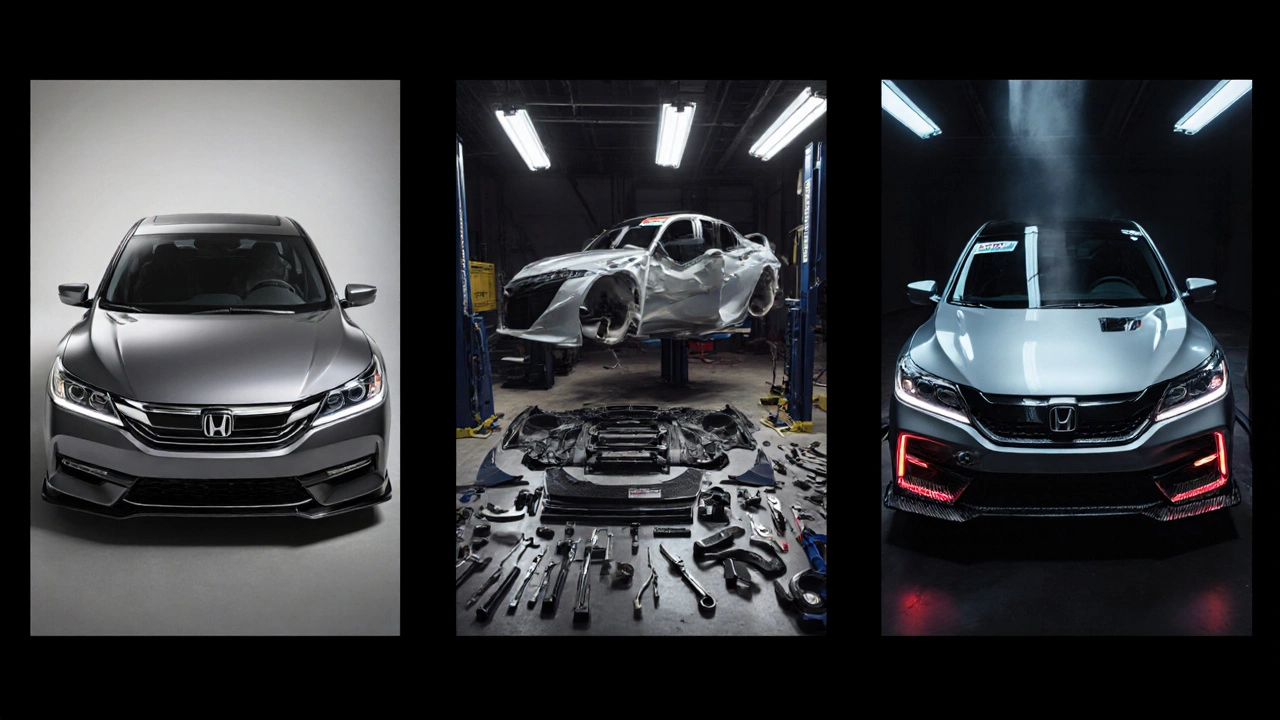
Can You Remove a Body Kit Later?
Yes - but it’s messy. Removing a body kit leaves holes, adhesive residue, and sometimes damaged paint. If you plan to sell the car, you’ll need to repair the original panels. That costs $1,000-$3,000 depending on damage.
Some people keep the original parts in a box and reinstall them before selling. That’s smart. It keeps the car’s value higher and avoids questions from buyers.
One rule of thumb: if you’re not planning to keep the car for 5+ years, skip the full body kit. A good wrap or decals give you the look without the hassle.
Alternatives to Body Kits
If you want to change your car’s look without the legal headaches, consider:
- Car wrapping - vinyl wraps can mimic carbon fiber, matte finishes, or even custom paint. Easier to remove. Costs $2,000-$4,000.
- Decals and stripes - affordable, reversible, no inspection needed.
- Wheel upgrades - new rims with low-profile tires change the stance dramatically.
- Lowering springs - improves look and handling. Just make sure you stay above 100mm ground clearance.
Many people start with a wrap, then later upgrade to a body kit. It’s a low-risk way to test the look.
Can I install a body kit myself?
Yes, but only if you have experience with automotive bodywork. You need tools like a sander, spray gun, bondo, and a clean workspace. Most DIYers underestimate the time - it takes 3-5 days just to prep and paint one bumper. If you’re not confident, hire a professional. A bad installation looks worse than no kit at all.
Will a body kit affect my car’s warranty?
Yes. If the manufacturer can prove the body kit caused damage - like a cracked radiator from a poorly fitted front lip - they can void the warranty on related systems. But if the kit doesn’t interfere with engine, transmission, or safety systems, the rest of the warranty usually stays intact. Always check your warranty terms before modifying.
Do body kits improve performance?
Some do, but most don’t. True aerodynamic kits - like those on race cars - reduce drag and increase downforce. But most street kits are for looks only. A cheap FRP spoiler won’t make your car faster. If performance is your goal, focus on suspension, tires, and brakes first.
Can I use a body kit from another country?
You can import one, but it must meet Australian standards. Many JDM or US kits are too wide, too tall, or have unsafe edges. Before buying overseas, check the dimensions against your car’s original width. If it exceeds 50mm per side, it won’t pass inspection. Stick to kits sold by Australian distributors - they’ve already been vetted.
How long does a body kit last?
A well-installed and properly maintained kit lasts 10-15 years. Fiberglass fades and cracks if exposed to UV without good paint. Polyurethane lasts longer and resists minor impacts. Keep it waxed, avoid car washes with harsh brushes, and touch up chips immediately. Neglect it, and it’ll look worse than stock in 3 years.
Final Thoughts
Modifying your car body isn’t wrong - it’s personal. But it’s also serious business. A body kit changes how your car looks, how it handles, and how the law sees it. Don’t rush it. Don’t cut corners. Don’t assume a cheap kit from overseas will fit.
Do your research. Talk to shops that specialize in modifications. Get the inspection done before you drive it. Keep your paperwork. And remember - the goal isn’t to look like a video game car. It’s to look like a car you’re proud to drive - every day, legally, safely.


